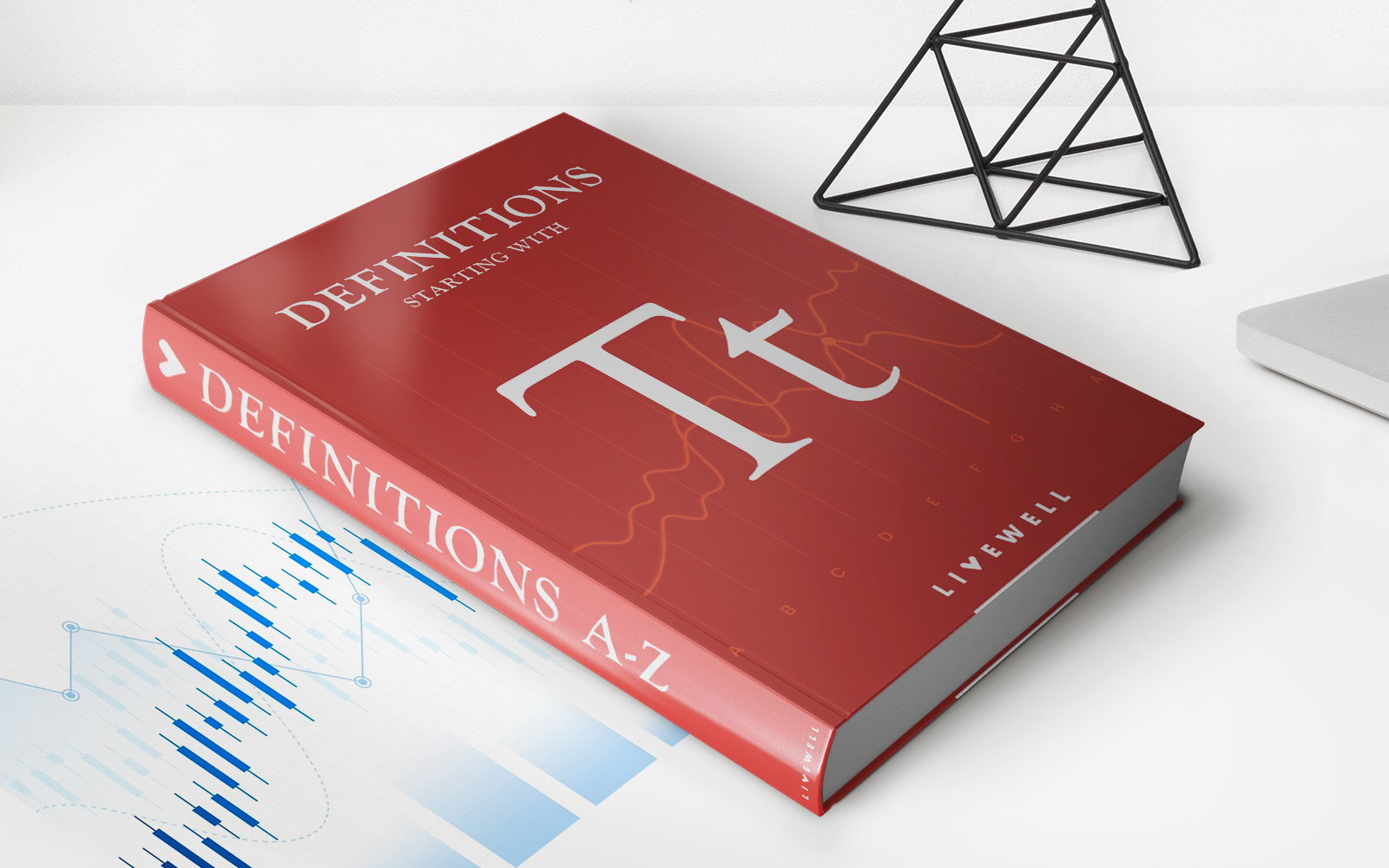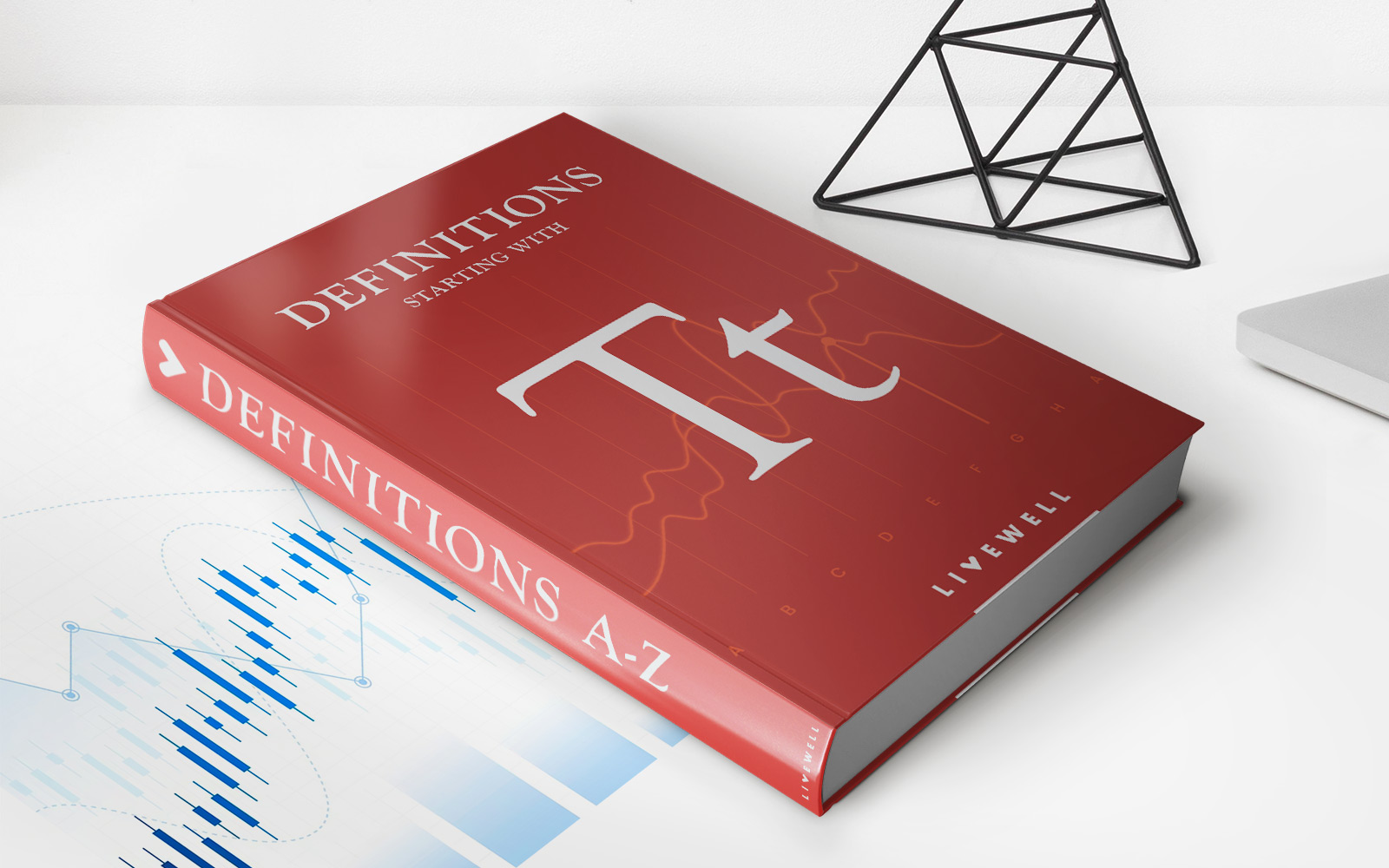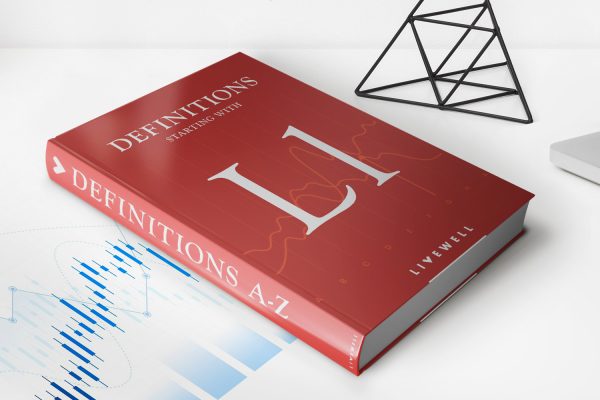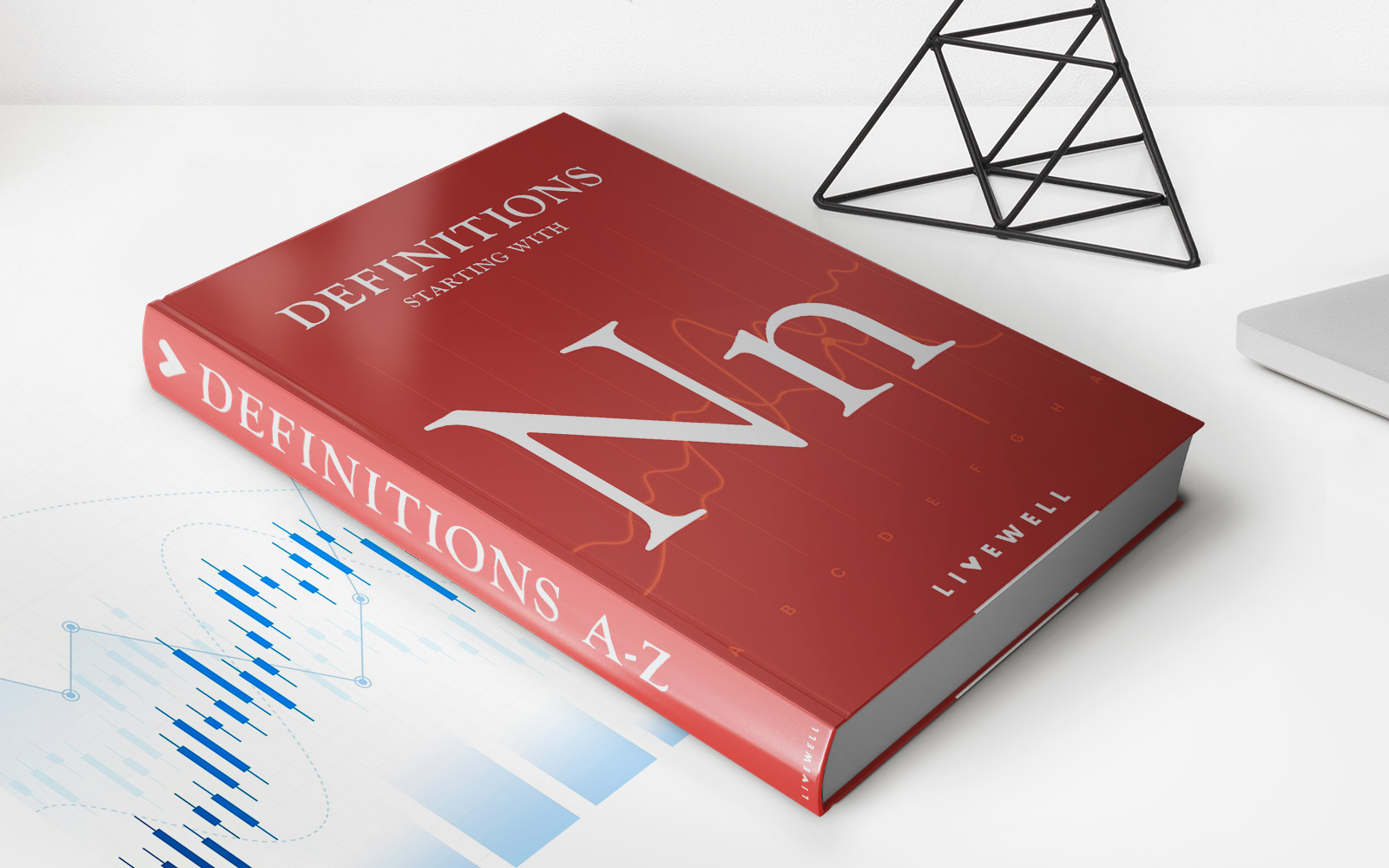Home>Finance>How Much Does A 1 Million-Dollar Life Insurance Policy Cost?


Finance
How Much Does A 1 Million-Dollar Life Insurance Policy Cost?
Modified: December 29, 2023
Get an overview of the cost of a 1 million-dollar life insurance policy and manage your finances wisely. Explore options and secure your future today.
(Many of the links in this article redirect to a specific reviewed product. Your purchase of these products through affiliate links helps to generate commission for LiveWell, at no extra cost. Learn more)
Table of Contents
- Introduction
- Factors that affect the cost of a 1 million-dollar life insurance policy
- Types of Life Insurance Policies
- Term Life Insurance
- Permanent Life Insurance
- Examining the Cost of a 1 Million-Dollar Term Life Insurance Policy
- Health Factors That Impact the Cost of Life Insurance
- Age and Gender Considerations for Life Insurance Rates
- How to Obtain Quotes for a 1 Million-Dollar Life Insurance Policy
- Conclusion
Introduction
Life insurance is an important financial tool that provides peace of mind and financial protection for your loved ones in the event of your death. It serves as a financial safety net, ensuring that your family is taken care of and can maintain their standard of living even if you are no longer there to provide for them.
When it comes to purchasing life insurance, one of the common questions that arises is how much coverage is enough. While the answer to this question varies depending on individual circumstances, a 1 million-dollar life insurance policy is often considered a substantial amount of coverage that can help cover expenses such as mortgage payments, college tuition, and outstanding debts.
However, like any insurance policy, the cost of a 1 million-dollar life insurance policy is influenced by various factors. Understanding these factors can help you make an informed decision about the type of policy that is right for you and ensure that you obtain coverage at a cost that fits within your budget.
Factors that affect the cost of a 1 million-dollar life insurance policy
The cost of a 1 million-dollar life insurance policy is impacted by several factors. It’s important to understand these factors as they can determine the premium you’ll need to pay for the coverage. Here are the key factors that influence the cost of a 1 million-dollar life insurance policy:
- Age: Your age is one of the most significant factors that impact the cost of life insurance. Generally, younger individuals can secure coverage at a lower cost compared to older individuals. This is because younger people are typically considered to be healthier and have a lower risk of death.
- Health: Your overall health plays a crucial role in determining the cost of life insurance. Insurance companies often require applicants to undergo a medical examination to assess their health condition. Factors such as pre-existing medical conditions, family medical history, lifestyle choices (such as smoking or excessive drinking), and BMI (Body Mass Index) can affect your premium. The healthier you are, the lower your premium is likely to be.
- Gender: Statistics show that women tend to live longer than men, which can result in lower premiums for females. Therefore, the gender factor plays a role in determining the cost of a 1 million-dollar life insurance policy.
- Occupation: Certain occupations deemed higher risk, such as pilots or firefighters, may lead to higher premiums due to the nature of their work. Insurance companies consider the risk associated with your occupation when underwriting your policy.
- Hobbies and activities: Engaging in high-risk activities like skydiving, mountaineering, or racing can increase your premium as it implies a greater risk of injury or death.
- Tobacco and alcohol use: Smoking or excessive alcohol consumption can have a negative impact on your health, and insurance companies usually charge higher premiums for individuals with these habits.
It’s essential to provide accurate information about these factors when applying for life insurance to ensure that your coverage is priced correctly and to avoid any potential issues down the line. By understanding these factors, you can assess your insurability and make informed decisions when purchasing a 1 million-dollar life insurance policy.
Types of Life Insurance Policies
When considering a 1 million-dollar life insurance policy, it’s important to understand the different types of life insurance policies available. Each type offers unique features and benefits suited for different financial goals. Here are the two main types of life insurance policies:
- Term Life Insurance: Term life insurance provides coverage for a specified period, typically 10, 20, or 30 years. It offers pure death benefit protection without any cash value accumulation. Term life insurance is generally more affordable compared to permanent life insurance, making it a popular choice for individuals seeking temporary coverage, such as until their mortgage is paid off or until their children reach adulthood. It is important to note that once the term ends, coverage ceases, and there is no cash value available.
- Permanent Life Insurance: Permanent life insurance provides coverage for your entire lifetime, as long as premiums are paid. It includes a death benefit and a cash value component that grows over time. There are three main types of permanent life insurance:
- Whole Life Insurance: Whole life insurance offers lifelong coverage with a level premium for the life of the policy. It also accumulates cash value that grows over time, which can be accessed through policy loans or withdrawals.
- Universal Life Insurance: Universal life insurance provides more flexibility than whole life insurance. It allows you to adjust your premium payments and death benefit amounts throughout the policy’s duration. Additionally, it offers a separate account within the policy where cash value can accumulate based on interest rates.
- Variable Life Insurance: Variable life insurance offers both a death benefit and investment component. Policyholders have the opportunity to allocate their cash value into various investment options such as stocks, bonds, and mutual funds. The cash value and death benefit can fluctuate based on the performance of the investments.
When choosing a life insurance policy, it’s crucial to assess your financial objectives, budget, and protection needs. Consulting with a financial advisor or insurance professional can help you determine the most suitable type of life insurance policy for your specific circumstances.
Term Life Insurance
Term life insurance is a type of life insurance that provides coverage for a specific period, known as the “term.” It offers a death benefit to the beneficiary if the insured person passes away during the term of the policy. Term life insurance is a popular choice for individuals seeking affordable and temporary coverage, such as for income replacement, mortgage protection, or funding education for children.
Here are some key features of term life insurance:
- Flexible term lengths: Term life insurance policies typically offer a range of term lengths, such as 10, 20, or 30 years. You can choose the term that aligns with your financial goals and needs. For example, if you have a 30-year mortgage, you might opt for a 30-year term policy to ensure coverage until your mortgage is paid off.
- Pure death benefit: Unlike permanent life insurance policies, term life insurance does not accumulate cash value over time. It is designed to provide a death benefit to beneficiaries upon the insured’s death during the policy term.
- Affordability: Term life insurance is generally more affordable compared to permanent life insurance. Since it does not include a cash value component, the premiums are typically lower.
- Renewability and convertibility: Some term life insurance policies offer the option to renew the policy at the end of the term or convert it into a permanent life insurance policy without undergoing a medical exam. This flexibility can be useful if your needs change or you want to continue coverage beyond the original term.
Term life insurance provides valuable protection during the term when you may have significant financial obligations or dependents who rely on your income. It offers a cost-effective solution for obtaining high coverage amounts, such as a 1 million-dollar life insurance policy. However, it’s important to note that once the term ends, coverage ceases, and there is no cash value available.
When considering term life insurance, it’s essential to assess your specific needs, such as the duration of coverage required and the amount of financial protection your loved ones would need in the event of your death. Comparing quotes from different insurance providers and consulting with a licensed insurance agent can help you find the most suitable term life insurance policy to meet your goals and budget.
Permanent Life Insurance
Permanent life insurance is a type of life insurance that provides coverage for your entire lifetime, as long as premiums are paid. Unlike term life insurance, permanent life insurance includes a death benefit as well as a cash value component that grows over time. It offers lifelong protection and can serve various financial purposes, such as wealth transfer, estate planning, or providing income replacement for beneficiaries.
Here are the main types of permanent life insurance:
- Whole Life Insurance: Whole life insurance is the most traditional form of permanent life insurance. It offers a guaranteed death benefit, fixed premiums, and the potential for cash value accumulation. Premiums for whole life insurance policies remain the same throughout the life of the policy.
- Universal Life Insurance: Universal life insurance provides more flexibility than whole life insurance. It allows policyholders to adjust the premium payments and death benefit amounts throughout the policy’s duration. Universal life insurance also includes a cash value component that earns interest based on prevailing rates set by the insurance company.
- Variable Life Insurance: Variable life insurance combines both a death benefit and an investment component. Policyholders have the option to allocate their cash value into various investment options such as stocks, bonds, or mutual funds. The cash value and death benefit can fluctuate based on the performance of the underlying investments.
Permanent life insurance offers several benefits:
- Lifetime coverage: Permanent life insurance provides coverage for your entire lifetime, ensuring that your loved ones will receive a death benefit regardless of when you pass away.
- Cash value accumulation: The cash value component of permanent life insurance policies grows over time. It can be accessed through policy loans or withdrawals, providing a source of savings or emergency funds.
- Tax advantages: Permanent life insurance policies may offer tax advantages such as tax-deferred growth of the cash value and potentially tax-free death benefit payouts to beneficiaries.
- Estate planning benefits: Permanent life insurance can be used as a tool for wealth transfer. It provides liquidity to cover estate taxes or to leave an inheritance to heirs.
It’s important to note that permanent life insurance typically comes with higher premiums compared to term life insurance. Additionally, the cash value component can take a few years to accumulate significant value. Therefore, permanent life insurance is often recommended for individuals with long-term financial goals and the ability to commit to higher premiums.
When considering permanent life insurance, it’s crucial to evaluate your financial objectives, risk tolerance, and long-term needs. Consulting with a financial advisor or insurance professional can help you understand the various options available and make an informed decision about the type of permanent life insurance policy that aligns with your financial goals.
Examining the Cost of a 1 Million-Dollar Term Life Insurance Policy
When considering a 1 million-dollar term life insurance policy, one of the most crucial factors to evaluate is the cost. The cost of a term life insurance policy can vary based on several key factors, including:
- Age: Your age at the time of purchasing the policy is a significant determinant of the premium. Generally, younger individuals pay lower premiums compared to older individuals because they are considered less of a mortality risk.
- Term length: The duration of the policy, or the term length, impacts the cost. Longer term lengths often result in higher premiums due to the extended coverage period.
- Health condition: Insurance companies assess your health status when underwriting a policy. Generally, individuals in good health with no pre-existing medical conditions receive lower premium rates. On the other hand, individuals with health issues or risky habits, such as smoking, may face higher premiums.
- Gender: Statistics show that women have longer life expectancies than men, which can result in lower premiums for females.
- Lifestyle choices: Certain lifestyle choices, such as engaging in high-risk activities, can increase the cost of a term life insurance policy. Insurance companies consider habits like skydiving, rock climbing, or extreme sports as more risky and may adjust the premium accordingly.
To illustrate the potential cost of a 1 million-dollar term life insurance policy, let’s consider an example:
John is a 35-year-old non-smoking male who is in good health. He wants to secure a 20-year term life insurance policy with a coverage amount of 1 million dollars. Based on quotes from various insurance providers, John could expect to pay around $500 to $800 per year for this policy.
It’s important to note that the actual premium can vary depending on additional factors, such as the insurance company’s underwriting guidelines, your location, and any specific circumstances disclosed during the application process. The underwriting process typically involves reviewing your medical history, conducting a medical exam (including blood tests and a physical), and assessing your lifestyle habits.
It’s recommended to obtain quotes from multiple insurance providers to compare premiums and ensure you are getting the best rate for your coverage needs. Working with a licensed insurance agent can also be beneficial, as they can navigate the application process and help you find the most affordable 1 million-dollar term life insurance policy that meets your specific requirements.
Health Factors That Impact the Cost of Life Insurance
When applying for life insurance, your health plays a crucial role in determining the cost of the policy. Insurance companies evaluate various health factors to assess the level of risk associated with insuring you. Here are some key health factors that can impact the cost of life insurance:
- Medical history: Your medical history is an essential factor considered by insurance underwriters. Pre-existing medical conditions such as diabetes, heart disease, cancer, or high blood pressure can lead to higher premiums. Insurance companies review medical records and may request additional information from your healthcare providers.
- Current health: Your current health status is assessed during the underwriting process. Insurance companies may require a medical examination that includes measurements like height, weight, blood pressure, and blood tests to evaluate your overall health condition.
- Lifestyle choices: Certain lifestyle choices can impact life insurance rates. For example, smoking has a significant impact on life expectancy and thus leads to higher premiums. Other factors like excessive alcohol consumption, drug use, or participation in high-risk activities can also influence the cost of life insurance.
- Family medical history: Insurance companies often consider your family’s medical history to assess potential hereditary health risks. If there is a history of certain diseases like cancer or heart disease in your immediate family, it may result in higher premiums.
- Body mass index (BMI): Your BMI is calculated based on your height and weight. A higher BMI, indicating obesity or being overweight, can lead to increased premiums as it is associated with various health risks.
- Prescription medications: The use of certain prescription medications can impact life insurance rates. Insurance companies review the medications you are taking to evaluate their potential impact on your health and mortality risk.
It’s important to provide accurate and truthful information about your health and lifestyle when applying for life insurance. Inaccurate information can lead to policy cancellation or denial of claims in the future. Additionally, insurance companies may request further medical evidence or ask for periodic medical check-ups to re-evaluate your health condition during the policy term.
If you have pre-existing medical conditions or lifestyle habits that may increase the cost of life insurance, it’s recommended to shop around and compare quotes from different insurance providers. Some insurers specialize in covering individuals with specific health conditions and may offer more competitive rates for your situation. Working with a licensed insurance agent can also help navigate the underwriting process and find the best coverage options at a suitable cost based on your health factors.
Age and Gender Considerations for Life Insurance Rates
Age and gender are significant factors that impact life insurance rates. Insurance companies consider these variables as they assess the risk associated with providing coverage. Here’s a closer look at how age and gender influence life insurance rates:
Age:
Your age at the time of purchasing a life insurance policy has a direct impact on your premium. Generally, younger individuals pay lower premiums, while older individuals pay higher premiums. This is because age is closely correlated with mortality risk. As you age, the probability of experiencing health issues or passing away increases, which results in higher premiums to offset the higher risk for insurance companies. It is advisable to secure a life insurance policy at a younger age to lock in lower rates and ensure long-term financial protection for your loved ones.
Gender:
Gender is another key consideration for life insurance rates. Statistics show that women tend to have longer life expectancies compared to men. As a result, women typically pay lower premiums for life insurance. This gender-based pricing reflects the lower mortality risk associated with women. While the differences in premiums may vary depending on various factors, such as age and health, it is worth noting that gender can play a role in determining the cost of life insurance coverage.
It’s important to mention that age and gender are just two factors among many that insurance companies assess when determining life insurance rates. Other factors, such as health, lifestyle choices, occupation, and family medical history, can also influence the cost of coverage. Insurance companies use actuarial tables and statistical models to calculate premiums based on these various factors.
If you are seeking life insurance coverage, it’s advisable to shop around and compare quotes from different insurance providers. Each company has its own underwriting guidelines and pricing structures, which can result in different rates for the same coverage amount. Working with a licensed insurance agent can help you navigate the process, understand the factors impacting your premiums, and find the most suitable life insurance policy at the best available rate based on your age, gender, and other relevant factors.
How to Obtain Quotes for a 1 Million-Dollar Life Insurance Policy
When considering a 1 million-dollar life insurance policy, obtaining quotes from multiple insurance providers is crucial to ensure you find the best coverage at a competitive price. Here are some steps to follow when seeking quotes for a 1 million-dollar life insurance policy:
- Evaluate your needs: Determine the amount of coverage you require. A 1 million-dollar policy may be suitable for individuals with substantial financial obligations, such as mortgage payments, education expenses, or outstanding debts.
- Research insurance providers: Look for insurance companies that specialize in offering coverage amounts and policies that align with your needs. Consider factors such as their financial strength, customer reviews, and claims-paying history.
- Work with a licensed insurance agent: Contact a licensed insurance agent who can help navigate the process and provide guidance on suitable policy options. An experienced agent can provide valuable insights, answer your questions, and assist you in obtaining quotes from different insurance carriers.
- Gather necessary information: Be prepared to provide personal and financial information when requesting quotes. This typically includes details such as your age, gender, health history, lifestyle habits, and any pre-existing medical conditions. Accurate information ensures that the quotes you receive are tailored to your specific circumstances.
- Request quotes: Reach out to insurance companies or your insurance agent to request quotes for a 1 million-dollar life insurance policy. Provide all the necessary information to receive accurate and comprehensive quotes.
- Compare quotes: Review the quotes received from different insurers. Compare the coverage amounts, premium rates, policy terms, and any additional benefits or riders offered. Consider the reputation and financial stability of each insurance company as well.
- Assess policy features: Evaluate the features of each policy beyond the premium and coverage amount. Consider factors such as conversion options, renewability, flexibility, and any potential exclusions or limitations.
- Consult with your insurance agent: Discuss the quotes and policy options with your insurance agent. They can provide insights, answer any questions, and help you make an informed decision based on your specific needs, priorities, and budget.
- Apply for the chosen policy: Once you have chosen a policy, complete the application process as instructed by the insurance company. Provide any supporting documents or undergo any necessary medical examinations as required.
Remember, obtaining quotes and purchasing a life insurance policy should be a thoughtful and informed decision. Take your time to research, compare options, and consult with professionals to ensure you secure the right 1 million-dollar life insurance policy that provides the necessary financial protection for your loved ones.
Conclusion
Obtaining a 1 million-dollar life insurance policy is an important step towards ensuring the financial security of your loved ones in the event of your passing. Understanding the factors that influence the cost of life insurance, such as age, gender, health, and lifestyle choices, can help you make informed decisions and find the most suitable coverage at a competitive price.
Term life insurance provides temporary coverage and can be a cost-effective option for individuals seeking high coverage amounts like a 1 million-dollar policy. It is important to assess the term length that aligns with your specific financial obligations and goals. On the other hand, permanent life insurance offers lifelong protection with a cash value component that grows over time. It can be an effective tool for long-term financial planning, estate planning, and wealth transfer.
When obtaining quotes for a 1 million-dollar life insurance policy, it is advisable to research insurance providers, work with a licensed insurance agent, and gather accurate information about your health and lifestyle. Comparing quotes from multiple insurers will help you find the best rates and coverage options that suit your needs.
Remember that age and gender are important considerations in determining life insurance rates. It is advantageous to obtain coverage at a younger age to secure lower premiums, and women generally pay lower premiums due to longer life expectancies.
By carefully assessing your needs, understanding the different types of life insurance policies, considering health factors, and obtaining competitive quotes, you can make an informed decision and secure a 1 million-dollar life insurance policy that provides financial protection for your loved ones.














